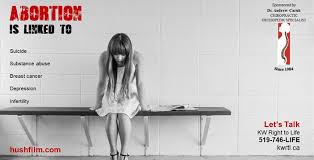Anti-abortion ads removed from GRT buses – Complaint by women’s sexual health organization prompts region to pull ads” – Johanna Weidner, Waterloo Region Record, April 5, 2019
Where books are burned, in the end, people will also be burned -Heinrich Heine -1823 (German Jewish poet who predicted the future Holocaust)
On May 10, 1933 Nazi dominated student groups carried out public burning of books they claimed to be “un-German”. Book burnings took place in 34 university towns and cities, with many works, especially of prominent Jewish writers e.g. Albert Einstein, ending up in bonfires. The German Nazi regime afterwards also raided book stores, libraries etc. to confiscate material it deemed dangerous or “un-German” – a powerful symbol of Nazi intolerance and censorship.
Consequently, the burnings provoked international criticism since they deemed them as barbaric and out of keeping with a modern civilized society.
Fast forward 86 years to April 4, 2019 in Canada, where similar intolerance and censorship raised its ugly head again. However, this time it was not against other races but against the humanity of unborn children in the womb and the truth.
The leader of a local counselling centre (SHORE – formerly Planned Parenthood, an abortion global giant which supports and kills unborn children, and profits from selling baby parts after partial-birth abortions – see Life Site internet undercover video), vehemently opposed the 7 educational posters belonging to a Kitchener-Waterloo Right to Life group, placed on city buses a few days prior. She demanded from Grand River Transit and Waterloo Region Chairperson that they be removed, complaining that, “We were quite shocked and surprised about the content of the ads…There is no evidence at all for these claims.”
Why are these ads so dangerous to this anti-life, sex counselling centre, wanting them removed and probably hoping that they be burned like the books in Nazi Germany? The ads simply state, “Abortion is Linked to: Suicide, Substance Abuse, Breast Cancer, Depression, and Infertility”. All these claims are supported by research and as Jane Richard, president of the pro-life group said, “We base our judgement on good science…It’s not new and it’s not made up…The effects are there and they’re real.”
Scientific Facts with References
Here are the scientific facts, with copious references, numbered and listed at the end – the evidence that SHORE claims not to exist. This is very important for understanding the seriousness of this discussion and in support of the above mentioned pro-life bus ads, and other ads in the future:
It is a scientifically proven fact that a human being is formed at fertilization, as described by world acclaimed embryologist Professor Keith L. Moore, namely “This fertilized ovum known as a zygote, is a large diploid cell that is the beginning, or primordium of a human being” (Essentials of Human Embryology – 1988). Elsewhere he writes “A zygote is the beginning of a new human being (i.e. an embryo)” (The developing human: clinically oriented embryology – 2003).
Abortion brutally kills defenceless human beings.
The late Dr. Bernard Nathanson a medical doctor who himself performed 5,000 abortions, supervised 10,000 others as done by his residents, and oversaw in his clinic 60,000 more, in one of his largest abortion clinics in the U.S., admitted himself later in life that: “ A favorite pro-abortion tactic is to insist that the definition of when life begins is impossible; that the question is a theological or moral or philosophical one, anything but a scientific one. Fetology makes it undeniably evident that life begins at conception and requires all the protection and safeguards that any of us enjoy…As a scientist I know, not believe, know that human life begins at conception.”
For visual evidence of abortion’s brutality one can look at: Dr Nathanson’s classic educational film “The Silent Scream” (1984), explaining and showing in detail an abortion on You tube; plus the recently released feature films entitled: “Gosnell: The Trial of America’s Biggest Serial Killer” (2018), and “Unplanned” (2019), showing the conversion of a Planned Parenthood clinic director – all three films confirm scientifically, medically and in real life, the chilling effects of abortions – estimated to have killed 4 million in Canada since 1970’s, and 1 billion people worldwide, in the last 100 years. (1)
Furthermore, Canada is only one of three nations in the world without an abortion law, and in the last five years, 766 babies alive after failed abortions were left to die and thrown away like garbage. (2)
Abortion is linked to a myriad of physical and psychological complications, most notably:
Suicide
Two studies from Finland show that women who had abortions were three times more likely to have a suicide than other women of childbearing age, and 6-7 times more likely to commit suicide compared to women who gave birth. (3) Thus, giving birth was a detriment to suicide – whereas abortion increased the suicide rate. (4) With teenagers, the statistics are even worse: a United States study showed that with teen girls, they were ten times more likely to attempt suicide if they had an abortion six months prior, than girls who didn’t abort, and 2-4 times more likely to have a suicide after abortion when compared to adult women. (5)
Substance Abuse
Elizabeth Ring-Cassidy and Ian Gentles in their book Women’s Health after Abortion – The Medical and Psychological Evidence (2nd edition) – 2003), write in detail about many studies indicating a cycle of abortion and substance abuse, with a cross-over between cause and effect. (6) Specifically, Reardon and Ney reported that “Women who aborted a first pregnancy were five times more likely to report substance abuse than women who carried to term.” (7) Also, Brende JO found that alcohol, tranquilizers or other substances were part of a constellation of self-destructive behaviours occurring as one of the ways that a woman attempts to cope with her decision to abort. (8) Furthermore, Reardon and Ney found that those who reported repeat abortions, had higher rates of substance abuse than those who had only one abortion. (9)
Breast Cancer
Since 1957, evidence in 23 of 37 studies worldwide, has linked induced abortion to the later development of breast cancer, including in 10 of 15 U.S. studies. The average increased risk of breast cancer is 30%, as clarified by detailed meta-analysis. (10) Some of the notable studies are as follows. Dr Janet Daling a research epidemiologist, published a study in 1994, in the Journal of National Cancer Institute revealing that women who had an induced abortion, had a 50% greater chance of developing breast cancer than matched control women who did not abort previously. Those that suffered a spontaneous abortion (miscarriage) interestingly had no increased risk of breast cancer. (11) The British Journal of Cancer published a study by Pike and colleagues in 1981 that showed a 137 per cent increased risk of breast cancer after an induced abortion. (12) Dr Joel Brind, a U.S. professor of endocrinology sifted through decades of published data on the epidemiology of breast cancer (28 reports) using a technique of meta-analysis, and found a significant connection between induced abortion and later development of breast cancer – by an average of 30%, and if subsequent abortions the risks increased. (13) Dr Brind’s study has won grudging acceptance among important sectors of the world medical community, e.g. in April of 2000 Britain’s Royal College of Obstetricians and Gynecologists (RCOG) concluded about his meta-analysis, that “…the Brind paper had no major methodological shortcomings and could not be disregarded.” (14) Furthermore, even more importantly for the first-time abortion was accepted as one of the four risk factors for breast cancer, in the New England Journal of Medicine, in February of 2000. (15) The biological rationale for breast cancer development is related to the woman’s increased unprotected exposure inside to her own estrogen, when her pregnancy is abruptly terminated early in gestation. (16)
Depression
A very common psychological disturbance following a genetic abortion is depression. (17) Blumberg and co-writers speculate that “the actual incidence of depression following selective abortion may be as high as 92 per cent among women, and as high as 82 per cent amongst the men studies.” (18) Another study showed that six months after the abortion, almost 50% of the study subjects suffered from depression and anxiety, and 10 out of 48 women were getting psychiatric treatment. (19) With regards to abortion in the youth, Reardon’s study published in the British Medical Journal in 2002, shows a clear link between depression and the abortion of “unintended” pregnancies. (20) Another study, showed a link by Brown of grieving behaviour and elective abortions, those not considered normally to be termination of “wanted” pregnancies. (21) Men also suffer after an abortion and often feel a sense of guilt and sorrow later on. Those that were not allowed to participate in their partner’s decision to abort, experience anger and frustration, which often leads to the breakup of the relationship, (22) with an estimated 40-50 per cent of couples breaking up following an abortion. (23)
Infertility
European research concludes that “…post-abortal PID (pelvic inflammatory disease), significantly increases rates of subsequent infertility and spontaneous abortion.” (24) Women whose first pregnancies end in abortion are susceptible to uterine perforations, to uterine adhesions, or retained fetal fragments, which can cause infections leading to PID – with all of these negatively affecting a woman’s ability to conceive and bear children later on. (25) Also, these women won’t benefit from the protective effect of a first full-term pregnancy, with epidemiological studies showing childbirth as a protective against onset of cancers, later on in life. (26) Ruiz-Velasco and colleagues, found bone fragments in the endometrium, brought on by ossification around fetal remains, causing infertility, saying that these problems are “…more frequent than thought.” (27) Confirming the above, Zoricic and colleagues commented on a fetal bone found in an infertile patient who had an abortion 19 years earlier that, these findings “…strengthen once again the association between abortion and infertility.” (28) Finally, there is increased risk of ectopic pregnancies after an abortion, i.e. 40% after one and 80% after two or more – Daling and colleagues. (29) This leads to subsequent impairment of fertility, as in the Tuomivaara study which concluded that “…the present study confirmed that an ectopic pregnancy dramatically increases the risk of secondary infertility.” (30)
Other Post-Abortion Complications
Furthermore, women who have had abortions are known to have, according to an Independent Ontario Study, in the first 3 months after an abortion: a 4-times rate of hospitalization for infection, a 5-times rate of hospitalization for psychiatric care, and a 5-times rate of hospitalization for another surgical procedure. (31) Prematurity of future births is also a very serious consequence of induced abortions. Writing in the Eugenics Review about the East-European experience of legalized abortions, Potts expressed “…little doubt that there is a true relationship between the high incidence of therapeutic abortion and prematurity.” (32) The magnitude of that risk, was shown in 49 studies between 1963 and 2001 in ten different countries, and all demonstrated a statistically significant risk of preterm birth after an abortion. (33) They demonstrated, not surprisingly, that the more abortions the greater the risk, e.g. one abortion – 80% higher risk, two abortions – 166% greater risk. (34)(35)
Dr. Emile Papiernik, a leading authority on prematurity reported that there is an 80% higher risk of a very preterm birth (less than 33 weeks gestation), for women with previous first-trimester abortions, and a 267 per cent higher risk of very preterm birth with previous second trimester abortions. (36)
Moreover, a link was found between premature babies weighing less than 1,500 grams and the serious disability of cerebral palsy – a 38 times higher risk than with full-term babies, in a sweeping survey of 111 studies of prematurity, led by Dr Gabriel Escobar. (37)
The Issue of Informed Consent
The above facts clearly prove the existence of a link between induced abortions and the adverse health consequences of those abortions – for the woman herself undergoing an abortion, the unborn child killed in her womb, and any possible future children.
Due to the seriousness of the evidence accumulated so far, professionals who deal with women considering an abortion have a duty to acquaint themselves with that evidence. Courts have established that patients have a right to full information, even when the risks are slight. Those that fail to provide full information about these risks, are liable to prosecution – mostly because the standard of disclosure has shifted to what a “…patient or person might want to know about a procedure.” (38) Furthermore, the complications from induced abortion as shown above, carry a risk many times greater than those associated with a diagnostic kidney procedure, and more lawsuits could be seen in the future, due to failure to obtain proper informed consent to the abortion procedure. (39)
The existence of a clear link between abortion, preterm births and cerebral palsy has implications for the issue of informed consent, for those contemplating an abortion. Since the liability costs are high for cerebral palsy, induced abortions which are not accompanied by very detailed informed consent forms “may carry an unsupportable legal liability”. Such an inadequate consent form, that “…does not inform women of the elevated future risk of a preterm delivery, and that the latter constitutes a risk factor for devastating complications such as cerebral palsy, may not satisfy courts.” (40) A lawyer named Kindley, whose client sued an abortion facility in North Dakota said very succinctly, “I think most citizens, whether they are pro choice or anti-abortion, believe in an individual’s right to self-determination. They believe people should be told about (procedural) risks, even if there is controversy over those risks.” (41)
Public Right to Know the Truth in a Democratic Society
Along with detailed informed consent forms, it would also be wise and prudent for a civilized, democratic society to know the truth, (42) especially about causations of major diseases e.g. breast cancer is the leading cause of cancer deaths in U.S. women (ages 20 to 59 – about 43,000/year) (43), and in Canada the second most common cause of death from cancer in Canadian women ( 5,000 estimated in 2017) (44) – with a proven link to abortion, as demonstrated earlier.
Two specific examples of public programs already in place warning people about two other major health risks are, the Mothers Against Drunk Driving (MADD) charitable campaigns, which focus on dangers of alcohol and driving, and various government Tobacco Product Labelling Legislations with health warnings in written and/or picture format, about smoking and lung cancer i.e. since 1965 in the U.S. (45), and in Canada since 2001. (46)
Therefore, for any organization or person in 2019 with all the data on the internet at their disposal, to demand the removal of educational signs that have been scientifically proven to be true (comparable to denying the smoking/lung cancer link) is hard to understand, as it is not congruent with objective proofs currently available, described earlier in this article. However, if sex promotion trumps human life (even the smallest) and a woman’s future health is jeopardized (by denying existing risks), then we might see more witch hunts against pro-life literature, advertising, books, and Facebook accounts, in Canada and elsewhere, similar to Nazi Germany’s 1933 book burnings. For example, Twitter executives recently blocked Mother Teresa’s quotation on abortion – because it was deemed as “hateful”.(47)
The question of recognizing the humanity of the unborn, can be compared to the struggle of African-American slaves in the 19-th century, who were deemed to be non-persons, with the Virginia Supreme Court in 1858 justifying slavery by saying, “In the eyes of the law…the slave is not a person.”
The reformed slave trade captain John Newton, haunted by his ghosts of 20,000 dead slaves in the 18-th century, wrote the famous hymn entitled “Amazing Grace”. In a popular film from 2006 by the same title, Newton poignantly remarks to his protégé, British politician and leading abolitionist William Wilberforce, “We were apes, they were human…..I once was blind and now I see.”
Just as the denial of personhood for African American slaves by the British and Americans, was a lie; so too, the categorization of Poles, Russians, Gypsies and Jews as “sub-human” by Nazi Germans was also a lie; and now, so is the denial of humanity for the unborn by self-serving politicians, “medically correct” health professionals, and groups like Planned Parenthood and their kindred affiliations – is also a lie.
Scientific Truth vs “Medical Correctness”
When criticism arises about the validity of scientific research linking abortion to various complications, one needs to look at the source of those references being quoted, since it would appear that many prominent journals, especially in the U.S. have become more ideological than idealistic, with a certain “medical correctness”. Three prominent journals from the U.S. are closely tied to major medical groups such as the American Medical Association, which publishes JAMA, American College Obstetricians Gynecologists which publishes Obstetrics and Gynecology, and American Academy of Pediatricians which publishes the Journal of Pediatrics. All three have endorsed early contraceptive use as well as induced abortions, (48) with the ACOG going as far as to oppose a federal ban on partial birth abortion (October 9, 1997- New York Times). (49)
Further reasons to question the sincerity of the AMA, is their history of complicity with big tobacco industry, e.g. supported Camel cigarettes in their TV and radio ads in the 1950’s, and withheld their endorsement of a surgeon’s general report, that came out in the U.S. in June 1965, which linked lung cancer and tobacco – probably because they were just given a $10 million gift from the tobacco industry. (50) Also, consider that the American Academy of Family Physicians has accepted large corporate donations from Coca Cola, to fund patient education on an obesity program, with the #1 partner of Coca Cola’s website being the American College of Cardiologists.
Two other large organizations that are often cited as references in abortion supporting literature, are the American Cancer Institute (ACI), and the National Cancer Institute (NCI). Some interesting facts about these organizations. ACI surprisingly donated $5,000 to Planned Parenthood (world’s largest abortion service provider), which uses hormonal contraceptives – substances that the World Health Organization (WHO) lists as increasing the risks of breast, cervical and liver cancer in women. (51) With regards to NCI, many medical authorities who deny the Abortion Breast Cancer (ABC) link cite an NCI flawed 2003 workshop finding of no ABC link, where contrary opinions were not allowed a proper voice and discussion, e.g. Dr. Joel Brind’s research into a proven ABC link – especially from India with an average increased risk of 439%, than those women who have not had an abortion.(52) Furthermore, NCI’s own researchers recently received a prestigious Lasker award for clinical research in 2017, at the same time that the same award was granted to Panned Parenthood, totalling $250,000 for “public service”. (53)
These seemingly contradictory distinctions (one for scientific research and the other for rewarding an organization promoting the killing of unborn children), are actually not too surprising. The founders of the award, Albert and Mary Lasker, also gave their first award in 1950, to the founder of Planned Parenthood – the racist and eugenics promoter (especially of blacks) Margaret Sanger, for “contribution to contraception”. (54) They also were on Sanger’s board of directors and contributed huge sums of money to the organization, along with the new name Planned Parenthood (from the original Birth Control Federation of America). Sanger also met with members of the Ku Klux Klan, advocated eugenics, and supported the use of sterilization to rid the planet of the “unfit”. (55)
Dr Joel Brind summarizes this “problem of denial” and the “matter of ideology which is safe abortion” by stating that the National Cancer Institute was determined to coverup or discredit research pointing to an abortion breast cancer link by pumping out studies that didn’t show a link, while they “ignore the rest of the literature showing a strong abortion breast cancer link”. Thus, he further states, the “truth happens to go up against a well entrenched mindset or agenda, in the public health arena”, which is a pro-abortion medical culture, and historically pro-abortion political systems in both US and Canada. (56)(57)(58)
Compounding the problem of “professional standards and integrity” as Dr. Brind readily points out, (59) one should note that the medical establishment is also slow to respond to emerging data, e.g. smoking-lung cancer link, which took decades to be accepted. Today this forms part of conventional medical wisdom, (60) which hopefully will include in the near future also the abortion-breast cancer link, especially in the most resistant global region to accept this link, North America.
Therefore, just as it would have been hazardous to your health to take the medical professional’s advise on smoking in the 1950’s, and eating in 2019, it may be hazardous to your health take medical advice about abortion, which is supported on official medical websites. For example, the American College of Obstetricians and Gynecologist’s opinion states that they want full access for abortion services.
In this discussion of the validity of scientific research is it possible that a greater regard for profit has now usurped honesty, integrity, and patient’s health?
Conclusion
In conclusion, let’s hope respect for the truth, human dignity, and freedom of speech, the cornerstone of our democracy will be upheld by our Canadian elected officials, in government and in various organizations, so that pro-life ads especially in the Kitchener-Waterloo region will be justly allowed to educate the public, now and in the future. In doing so, our Canadian society will say: no to intolerance; no to censorship of truth; and no to disregard for human life – in keeping with the real values of a civilized society.
There are educated sadists, who prefer to search for errors than to confirm truths – Marie Sklodowska Curie- Polish scientist and winner of Nobel Prize in Physics-1903; and Nobel Prize in Chemistry-1911- First woman to win a Nobel Prize; First person and only woman to win twice; and the only person (male or female), to win a Nobel Prize in two different sciences
References
1. Baklinski Pete, “Greatest genocide in history: Ground breaking report
finds abortions in the past 100 years” – Life Site News, Jan. 25, 2017
2. Laurence Lianne, “766 babies were born alive after botched abortions in
Canada and allegedly left to die” – Life Site News, Aug. 20, 2018
3. Gissler, Hemminki & Lonnquist, “Suicides after pregnancy in Finland, 1987 –
94 : register linkage study” – British Journal of Medicine, 313 : 1431-4, 1996;
and M. Gissler, “Injury deaths, suicides and homicides associated with
pregnancy, Finland 1987-2000 ” – European J. Public Health, 15 (5) : 459 63,
2005
4. Terzo Sarah, “Abortion and suicide: the grim statistics” NRL News Today, Feb.
9, 2017
5. Garfinkel B, et al., “Stress, Depression and Suicide: A Study of Adolescents in
Minnesota” Responding to High Risk Youth, (University of Minnesota:
Minnesota Extension Service, 1996)
6. Ring-Cassidy Elizabeth, and Gentles Ian, “Women’s Health after Abortion-
The Medical and Psychological Evidence” 2nd ed. Published by The deVeber
Institute for Bioethics and Social Research, 2002, p 198-200
7. a) Reardon D “Substance Abuse Subsequent to Abortion” Presented to the
Society of Catholic Social Scientists, Second Annual Conference, Nov. 4, 1994
b) Reardon DC, and Ney PG “Abortion and subsequent substance abuse”
American Journal of Drug and Alcohol Abuse” 2000 February; 26(1): 61-75;
p 61
8. Brende JO “Fragmentation of the personality associated with post-abortion
trauma” Newsletter of the Association of Interdisciplinary Research in Values
and Social Change, July/August 1995 8(3): 1-8; p 6
9. Reardon and Ney. 2000, see n.(5)
10. Ring-Cassidy, et al 2002, see n.(4) p 17-28
11. Daling JR, Malone KE, Voigt LF, White E, and Weiss NS “Risk of breast
cancer among young women: relationship to induced abortion” Journal of the
National Cancer Institute 1994 Nov(2) ; 86(21) : 1584-92
12. Pike MC, Henderson BE, Casagrande JT, Rosario I, and Gray GE “Oral
contraceptive use and early abortion as risk factors for breast cancer in young
women” British Journal of Cancer 1981 Jan; 43(1); 72-6
13. Brind J, Chinchilli VM, Severs WB, Summy-Long J. “Induced abortion as an
independent risk factor for breast cancer: a comprehensive review and meta-
analysis” Journal of Epidemiology and Community Health 1996 Oct; 50(5):481-
496
14. Royal College of Obstetricians and Gynecologists. “Evidence-based Guideline
No. 7: The Care of Women Requesting Induced Abortion” London; 2000 Apr.
15. Armstrong K, Eisen A, Weber B. “Assessing the risk of breast cancer” New
England Journal of Medicine 2000 Feb 24; 342(8):564-571
16. Ring-Cassidy, et al see n.6. 2003, p 28
17.a) Donnai P, Charles N, and Harris R. “Attitudes of patients after “genetic”
termination of pregnancy” British Medial Journal 1981; 282-621, p.622
b) Blumberg BD, Golbus MS, and Hanson KH. “The psychological sequelae of
abortion performed for a genetic indication” American Journal of Obstetrics
and Gynecology 1975;122:799-808, p.805
18. Blumberg BD. 1975 see n. 17(b)
19. Lloyd J, and Laurence KM. “Sequelae and support after termination of
pregnancy for fetal malformation” British Medical Journal 1985;290:907-909
20. Reardon DC, and Cougle JR. “Depression and unintended pregnancy in the
National Longitudinal Survey of Youth: a cohort study” British Medical
Journal 2002 Jan.19; 324:151-152
21. Brown D, Elkins TE, and Larson DB. “Prolonged grieving after abortion: A
descriptive study” The Journal of Clinical Ethics 1993 (4): 118-123
22. Ring-Cassidy, et al 2002 see n.6 p. 248-249
23. Ring-Cassidy, et al 2002 see n.6 p. 218
24. Heisterberg L, and Kringelbach M. “Early complications after induced first-
trimester abortion” Acta Obstetrica et Gynecologica Scandanavica
1987;66(3):201-4, p.204
25. Ring-Cassidy, et al 2002 see n.6 p. 65
26. Newcomb PA, Store BE, Longnecker MP, Mittendorf R, Greenberg ER, and
Willet WC. “Pregnancy termination in relation to risk of breast cancer”
Journal of the American MedicL Association 1996 January; 275(4):283-7
27. Ruiz-Velasco V, Gonzales Alfani G Pliego Sanchez I, and Alamilo Vera M.
“Endometrial pathology and infertility” Fertility and Sterility 1997
April;67:687-92, p. 692
28. Zoricic D, Ambrozic B, and Peric D. “A fetal bone as a foreign body in the
uterus” Article in Serbo-Croatian (Roman). Lijec Vjesn 1994 November-
December;116(11-12:298-300
29. Daling JR, Chow WH, Weiss NS, Metch BJ, and Soderstrom R. “Ectopic
pregnancy in relation to previous induced abortion” Journal of the American
Medical Association 1985 February;253(7):1005-8
30.a) Tuomivaara I, and Kauppila A. “Ectopic pregnancy: a case-control study of
aetiological risk factors” Archives of Gynecology and Obstetrics
1988;243(1):511
b) Tuomivaara I, and Kauppila A. “Radical or conservative surgery for ectopic
pregnancy? A follow up study of fertility of 323 patients” Fertility and
Sterility 1988 October;50(4):5803
31. Ostbye T, Wenghofern EF, Woodworth CA, Gold G, and Craighead J. “Health
Services Utilization after induced abortions in Ontario: A comparison
between community clinics and hospitals” American Journal of Medical
Quality 2001 May;6(3): 99-106. Table 3, p.103, and p.105P
32. Potts M. “Legal abortion in Eastern Europe” Eugenics Review 1966-1967;58-
59:232-250, p.235
33. Zhou W, Sorensen HT and Olsen J. “Induced abortion and subsequent
pregnancy duration” Obstetrics and Gynecology 1999 Dec;94(6):948-53
34. Zhou et al. 1999 see n. 33, p. 948
35. Ring-Cassidy et al. 2002 see n.6, p. 45-77
36. Ancel P-Y, Saurel-Cubizolles M-J, Renzo GCD, Papiernik E, and Breart G. “Very
and moderate preterm births: Are the risk factors different?” British Journal
of Obstetrics and Gynecology 1999; 106:1162-1170
37. Escobar GJ, Littenberg B, and Petitti DB. “Outcome among surviving very low
birthweight infants: a meta-analysis” Archives of Disease in Childhood
1991;66:204-211
38.a) Picard EI and Robertson GB. “Legal Liability of Doctors and Hospitals in
Canada” Toronto: Carswell, 1996; Chapter 3. 110-157
39. Ring-Cassidy et al. 2002 see n.6, p.271-272
40. Rooney B, and Calhoun BC. “Induced abortion and the risk of later
premature births” Journal of American Physicians and Surgeons 2003
(summer);8 (2):46-49, p. 47
41. “Controversy over alleged breast cancer link lands abortion clinic in court”
Women’s Press.com Archived from the original on 17 July, 2011
42. “The Public’s Right to Know-Principles on Freedom of Information
Legislation” Article 19, June 1999
43. Kahlenborn Chris, MD “Breast Cancer-It’s Link to Abortion and the Birth
Control Pill” published by: One More Soul in USA, 2000 p. VII
44. Rethink Breast Cancer “Breast Cancer Statistics in Canada” May 2, 2018
45. Public Health Law Centre “Product Regulation” – 2019
46. Tobacco Labelling Resource Centre “Health Warnings-Canada” 2013
47. Brown Michael. “Ted Cruz asked Twitter execs why they blocked a Mother
Teresa quote. He got 12 seconds of silence” Life Site News April 12, 2019
48. Kahlenborn 2000 see n. 43, p. 70
49. “ACOG opposes a federal ban on partial birth abortion” New York Times
October 9, 1997 –
50. “American Medical Association Complicity with Big Tobacco” YouTube – June
22, 2016
51. Smith, Peter. “American Cancer society Gives Money for Just Saying No – to
Smoking” – Life Site – March 6, 2007
52. “The abortion breast cancer link – The ultimate guide to understanding how
abortion and breast cancer are related” – Life Site News – 2019).
53. “Lasker Awards honor Planned Parenthood and research on preventing and
fighting cancer” – Los Angeles Times, Sept. 6, 2017
54. van Maren, Jonathon. “Nobody has more in common with white
supremacists than the abortion industry” – Life Site News – August 18, 2017
55. Novielli, Carole. “The foundation that just gave Planned Parenthood an
award also funded its eugenics projects” – Live Action – September 13, 2017
56. Brind, Joel. “Abortion-Breast Cancer Link. Article by Joel Brind, PH.D.” –
Action Life – 10 October , 2014
57. Brind, Joel. “Dr. Joel Brind – Breast Cancer and Abortion” – You Tube – Life
Matters TV, April 16, 2008
58. Brind, Joel. “LM 512 Joel Brind, Ph.D., Baruch College City University of New
York” – You Tube – Life Matters TV, 2015
59. Brind, Joel. 2015 See n.58
60. Ring-Cassidy et al. 2002 see n.6 p.26











